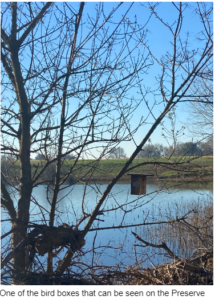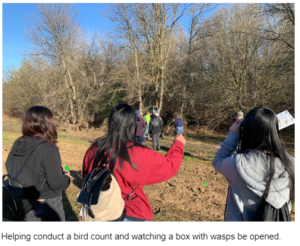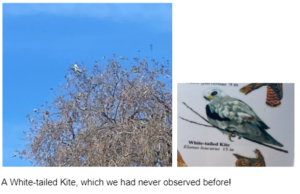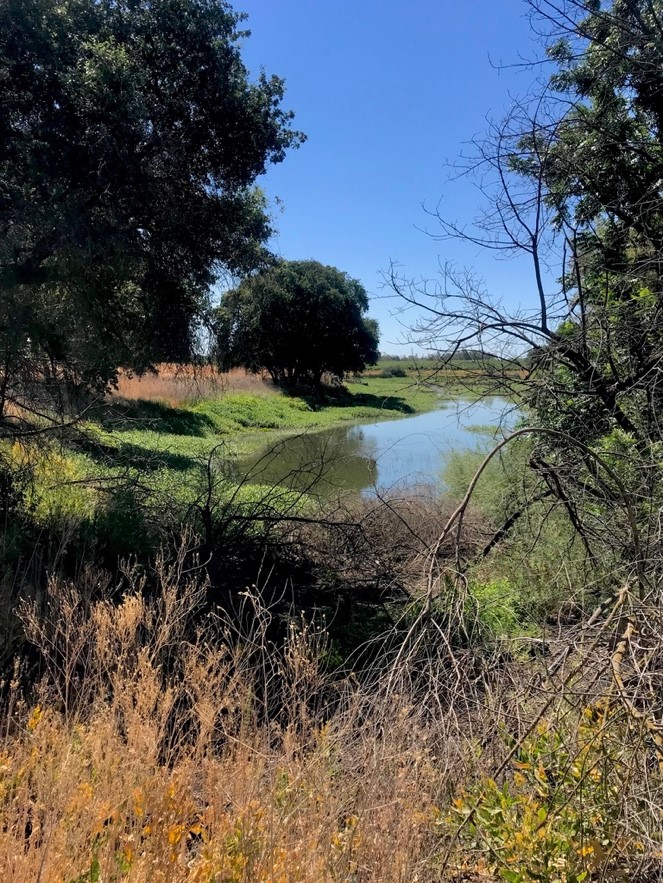San Joaquin Audubon Waldo Holt Reserve Project
By: Keira Imada, Emily Wong, Jamily Gloria, Julieta Pelayo-Zavalza, Juliana Gonzalez
 This year we have been taking Advanced Placement © Environmental Science at Lincoln High School in Stockton, California. Advanced Placement © Environmental Science is a year-long class in which students engage with many concepts, scientific principles, and approaches necessary to comprehend the world’s interrelationships. Students enrolled in this course must identify environmental problems, as well as evaluate the effects or risks associated with these problems and find solutions to prevent them. AP © Environmental Science is a multicourse class that focuses on topics from biology, geology, chemistry, and geography. This course focuses on nine main topics which are the following; Ecosystems, Biodiversity, Populations, Earth Systems and Resources, Land and Water Use, Energy Resources and Consumption, Atmospheric Pollution, Aquatic and Terrestrial Pollution, and Global Change. Students obtain a deeper understanding of the meaning of sustainability, connections between the environment and diverse species, energy transfer, and earth systems.
This year we have been taking Advanced Placement © Environmental Science at Lincoln High School in Stockton, California. Advanced Placement © Environmental Science is a year-long class in which students engage with many concepts, scientific principles, and approaches necessary to comprehend the world’s interrelationships. Students enrolled in this course must identify environmental problems, as well as evaluate the effects or risks associated with these problems and find solutions to prevent them. AP © Environmental Science is a multicourse class that focuses on topics from biology, geology, chemistry, and geography. This course focuses on nine main topics which are the following; Ecosystems, Biodiversity, Populations, Earth Systems and Resources, Land and Water Use, Energy Resources and Consumption, Atmospheric Pollution, Aquatic and Terrestrial Pollution, and Global Change. Students obtain a deeper understanding of the meaning of sustainability, connections between the environment and diverse species, energy transfer, and earth systems.
 The sustainability projects are projects that we have been doing to help expand our knowledge on how to create positive societal practices for our community and conserve Earth for future generations. There are 3 types of projects we could have chosen from. The first one is volunteer work. This required at least 10 hours of sustainability-oriented work like picking up litter, working in the school garden, or helping out at events such as Earth Day, the Lodi Sandhill Crane Festival, and the Coastal Clean-up near Buckley Cove or Lodi Lake. Other volunteer opportunities included tree planting, waste collection days, and counting birds with the Audubon Society Christmas Bird Count. The second option was researching a topic related to sustainability. The research could come from published sources but it also needs to include primary research in which you produced your own data. Some example topics are air quality, energy use, food waste, or gardening. Lastly, the third option was doing a hands-on project. This project included research, design, and implementation of a solution to an environmental problem. Students could have completed monthly bird surveys, built and researched compost bins or birdhouses, or participated in the school’s recycling programs. Overall, being sustainable plays a vital role in our Earth. By doing sustainability projects, we all can take little steps to preserve our environment.
The sustainability projects are projects that we have been doing to help expand our knowledge on how to create positive societal practices for our community and conserve Earth for future generations. There are 3 types of projects we could have chosen from. The first one is volunteer work. This required at least 10 hours of sustainability-oriented work like picking up litter, working in the school garden, or helping out at events such as Earth Day, the Lodi Sandhill Crane Festival, and the Coastal Clean-up near Buckley Cove or Lodi Lake. Other volunteer opportunities included tree planting, waste collection days, and counting birds with the Audubon Society Christmas Bird Count. The second option was researching a topic related to sustainability. The research could come from published sources but it also needs to include primary research in which you produced your own data. Some example topics are air quality, energy use, food waste, or gardening. Lastly, the third option was doing a hands-on project. This project included research, design, and implementation of a solution to an environmental problem. Students could have completed monthly bird surveys, built and researched compost bins or birdhouses, or participated in the school’s recycling programs. Overall, being sustainable plays a vital role in our Earth. By doing sustainability projects, we all can take little steps to preserve our environment.
 For some of our volunteer hours, we helped out at the Waldo Holt Reserve. The Waldo Holt Reserve is located near the northern border of San Joaquin County. The Preserve is based south of Galt, near Dry Creek. The Preserve is a mitigation property that is being used to restore native plants, such as elderberry bushes and milkweed. On the property, bird boxes have also been installed to create a nesting area and improve the habitat for the Western Blue Birds and Wrens. European Starlings are an example of an invasive species that take nest cavities from native birds. Bird boxes provide a safer area for nesting. We helped document the contents of the boxes, and which boxes were missing.
For some of our volunteer hours, we helped out at the Waldo Holt Reserve. The Waldo Holt Reserve is located near the northern border of San Joaquin County. The Preserve is based south of Galt, near Dry Creek. The Preserve is a mitigation property that is being used to restore native plants, such as elderberry bushes and milkweed. On the property, bird boxes have also been installed to create a nesting area and improve the habitat for the Western Blue Birds and Wrens. European Starlings are an example of an invasive species that take nest cavities from native birds. Bird boxes provide a safer area for nesting. We helped document the contents of the boxes, and which boxes were missing.
Native planting is being done to increase biodiversity removed by habitat destruction. On the mitigation property, a company was planting elderberry for the endangered Valley Elderberry Longhorn Beetle. We helped plant Narrow Leaf Milkweed which provides a habitat for the monarch butterfly. Due to endangerment, planting the milkweed would increase the butterfly population by providing habitat. In class, we learned that the higher the species diversity, the higher the ecosystem resilience. With the storms that had occurred throughout winter, spreading the milkweed seeds would give monarch butterflies the habitat and food that are essential for them to survive while also bringing back helpful pollinators to the site.
Waldo Holt Preserve: A New Opportunity for S.J. Audubon
 The SJAS board of directors IS pleased to inform the S.J. Audubon membership of the founding of the Waldo Holt Preserve. Access to the Preserve willnot be open to the general public, but it will be available to S.J. Audubon groups for field trips and other educational purposes.
The SJAS board of directors IS pleased to inform the S.J. Audubon membership of the founding of the Waldo Holt Preserve. Access to the Preserve willnot be open to the general public, but it will be available to S.J. Audubon groups for field trips and other educational purposes.
The Preserve is located at the north border of S.J. County. It is on the west side of Lower Sacramento Rd., just south of Dry Creek and the city of Galt. It consists of approximately 80 acres, a large portion of which is riparian habitat lying to the south side of Dry Creek. There is ALSO a seasonal creek and pond on the property.
The purchase of the property was a collaboration between the S.J. Council of Governments (COG) and the Waldo Holt Conservancy* (WHC). Five acres of the property was paid for by WHC, which has SINCE disbanded. These five acres have been licensed to S.J. Audubon for educational uses in which we wish to engage. However, the entire 80-acre Preserve will be available for field trips. COG plans to plant native elderberry bushes on the
property, a very bird friendly plant. The Waldo Holt Preserve is now designated as an eBird Hotspot. Two scouting trips there have identified 67 bird species and we are confident that future birding trips will result in significant increases in these numbers.
S.J. Audubon and COG will work together to improve the property as habitat for avian and other wildlife. We welcome ideas for our membership for improvement and educational uses of the property. We expect to establish a WHP committee to plan and help implement these Projects. We encourage non-board members to volunteer to serve!
We are especially pleased the preserve is being named in memory of Waldo Holt. Waldo was a longtime Conservation Chair for S.J. Audubon. Waldo loved all birds but was especially active in the preservation of Swainson’s Hawks.
The first open field trip to the WHP is being planned for this summer. So, be on the lookout for an announcement and plan to attend.
*The Waldo Holt Conservancy was a non-profit organization created “To increase, preserve, restore, protect and enhance wildlife (especially Swainson’s Hawk) and wildlife habitat in the San Joaquin Valley and San Joaquin Delta. To benefit the public by allowing for the protection, enhancement and preservation of wildlife and wildlife habitat. To encourage scientific study of wildlife. To promote education about wildlife. To honor the memory of Waldo Holt for his efforts to inform and educate the public about wildlife, for his scientific study of wildlife, and for his work to preserve and protect wildlife and its habitat.”